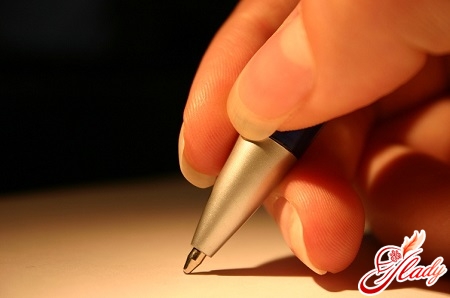 It probably never occurs to yousay to your boss: “Hi, buddy! How are you?” Except for those rare cases when he is both a manager and a friend, this is inappropriate. At the same time, in the process of business correspondence, we allow ourselves even more grandiose blunders. But, you must agree, knowing the etiquette of business letters is necessary in order to look respectable and have a good reputation. We will tear off all the veils hiding the truth in front of you and tell you how to communicate competently with business partners.
It probably never occurs to yousay to your boss: “Hi, buddy! How are you?” Except for those rare cases when he is both a manager and a friend, this is inappropriate. At the same time, in the process of business correspondence, we allow ourselves even more grandiose blunders. But, you must agree, knowing the etiquette of business letters is necessary in order to look respectable and have a good reputation. We will tear off all the veils hiding the truth in front of you and tell you how to communicate competently with business partners.
Specificity of business relations
If you want to understand how to write correctlywork letters, you need to know how business communication differs from ordinary communication. Like any other, it includes the exchange of information, interaction and perception of each other. But the main feature of business communication is that it has practically no personal component. For example, at work or in any government organization, we practically do not show any of our characteristic character traits: we do not joke, do not shout, do not dance, etc. - On the contrary, we put on a mask of a calm, polite and businesslike person who cannot be pierced by anything. There is no place for emotions in business communication. None of your partners, colleagues or clients will be satisfied if you suddenly start crying or jumping for joy. No, of course, you are not a robot, but something close to it. At the very least, you have to avoid bright and deep emotions. Another feature of business communication is that you cannot stop it whenever you want. That is, in ordinary life this also happens, for example, when you talk to your mother-in-law or parents. But in the professional sphere, you can’t leave at all if a client or business partner asks you about something. And ignoring his letters, messages and calls is also a risk of losing your job after this. That is why the line about stress resistance and teamwork is so popular in various job posting requirements, because in the business environment you will have to meet and communicate with a variety of people. Business communication always has a goal. If in the kitchen with friends you are just going to chat (although there are needs behind this too), then at work you get together with certain people with a fairly clear idea. This can be a discussion of a project, planning the organization’s work for the next six months or something else. Accordingly, such a feature forms the character of business communication: restrained, “dry”, fast, clear and without lyrical digressions. At least, this is how everything works out in most situations.
The general etiquette of a business letter
Naturally, written speech is veryis different from oral: you don’t have the opportunity to place accents using intonation. And there are many more etiquette rules in this case - at least, that’s how it seems when you decide to write a business letter. Paper is worth mentioning separately. If earlier, when talking about a letter, you immediately imagined a snow-white envelope dropped into a mailbox, now the situation has changed. Regular mail is used less and less, while electronic mail is gaining momentum. We must not forget that the paper for letters must be perfectly clean and not wrinkled - this is a matter of reputation. It is desirable to have letterheads with an emblem and phone numbers for business correspondence. All pages, except the title page, must be numbered. However, regular mail is increasingly used not for sending letters, but for sending contracts and other business papers. Communication is given over to electronic correspondence. By the way, in cases when you need to quickly resolve an issue and it is appropriate, you can omit the addresses and greetings in each follow-up message. But the first letter should begin with something like: “Good afternoon, dear Ivan Ivanovich.” In written speech (especially business), literacy is especially important. When you are simply talking to a person, it is enough to just avoid deliberate speech errors and rudeness, placing the stress correctly. In writing, all your gaps in knowledge of the Russian language may become obvious. Therefore, if you do not feel confident in your own literacy, it is better to check the letter for grammatical errors again before sending it. Do not forget to write the beginning of a sentence with a capital letter and place punctuation marks, because without this it can be very difficult to understand the meaning of the message. Use spaces and ellipses to structure the text. Speaking about the style of communication, do not forget that your letter, first of all, should be “readable”. That is, it is recommended to avoid complex multi-level constructions and unnecessary words (except for those cases when you are a lawyer, or it is necessary in correspondence). Provide real examples, dilute the text with diagrams and charts - this makes the information more visual and understandable. The language of business correspondence, unlike ordinary correspondence, is often full of professional jargon and cliches - this is an etiquette norm.
Nuances of business correspondence
Above we talked about general business etiquettecorrespondence. However, there are many nuances, the description of which is worthy of not only a separate article, but a whole book. We have specially selected for you the most popular and relevant features of a business letter. We suggest that you familiarize yourself with them. The structure of a business letter Like any other, a business letter has its own clear structure. Only if in a regular one it can vary quite a lot from case to case and depending on your desire, then in a business message there are quite strict writing rules. At the same time, there is no single standard by which most letters are drawn up - as a rule, each company has its own norms. Nevertheless, we offer you the most general principles of drawing up an electronic business letter, which will be relevant in ninety percent of cases.
It should be remembered that this is quite universalThe structure may vary depending on the type of message. There are advertising, thank-you, guarantee and cover letters, invitations, notices, statements, reminders, messages, warnings and demands. But this structure is applicable to almost all of them. The size of an e-mail is quite clearly stipulated by etiquette rules: as a rule, it should be twice as short as a handwritten one. If you want to send a large amount of information, then it is better to place a short cover text in the body of the letter itself, and arrange everything else as a separate attachment. In cases where it is large, exceeding one megabyte, it is better to warn the recipient about this - not all companies pay for unlimited Internet access. Reply to a message You have probably noticed that when you click the “Reply” button when sending a message, the particle “Re…” appears before the subject of the reply letter. It will help your recipient understand which message you responded to. And in the opened window the text of the previous correspondence appears. To erase it or to save it - that is the question. It all depends on the level of formality of the correspondence. Simply put, if you are corresponding with a friend or some other person with whom an extremely formal style is not necessary, you can erase the unnecessary, leaving only the lines that allow you to understand what the conversation is about. For convenience, you can also break your letter into these very quotes and place your answer under each of them. If the correspondence must be within the framework of all formalities, then keep its content intact. Speech formulas As you have already noticed, business letters are almost entirely built on all sorts of speech stamps or cliches - stable expressions demonstrating this or that phenomenon. It is very useful to have a “piggy bank” of these very formulas at hand, which can be combined with each other and write long messages in semi-automatic mode. We wrote about the obligatory greeting above, so let's turn to less common, but equally relevant thoughts.
- Expression of regret: “We regret to inform you…”, “Unfortunately, we are unable to agree…”, “To our regret, we are faced with…”;
- Praise:“Thank you for…”, “Let me express my appreciation to you for…”, “Considering your enormous contribution to…”, “As you are leading experts in your field”, “Thank you for…”;
- An invitation emphasized with positive emotions:“We would be delighted to hear from you…”, “Please accept our invitation and we hope you will have time…”, “We are honored to offer you…”, “We are pleased to invite you…”;
- Final phrases: "We hope for further cooperation," "We look forward to new ideas from you", "We express our confidence that the problem will be solved in the near future," "We wish you success";
Email Response Time So, yousent a message, but there is still no answer. It is quite logical that you begin to worry whether the addressee has received your message. In order to avoid this unpleasant situation in the future, use the “Receipt Notification” function, thanks to which you will be automatically sent a confirmation that your letter has been viewed. Or add a line asking to do this in the text of the message. An alternative way to check is also a simple call to the addressee and ask about the delivery of the letter. In general, according to the rules of business etiquette, a response should not be delayed for more than two days. If you need more time, then you should notify your correspondent about this. And, of course, do not forget that you should respond to all letters (with the exception of perhaps obvious spam) - this is a guarantee of your business reputation. Any norm implies a certain social agreement that facilitates the interaction of the participants in communication. But ignorance of these rules can cause a lot of problems for correspondent partners. Therefore, print out this article and hang it above the monitor - and very soon all the norms we have voiced will enter your consciousness on their own, ceasing to cause you inconvenience.









